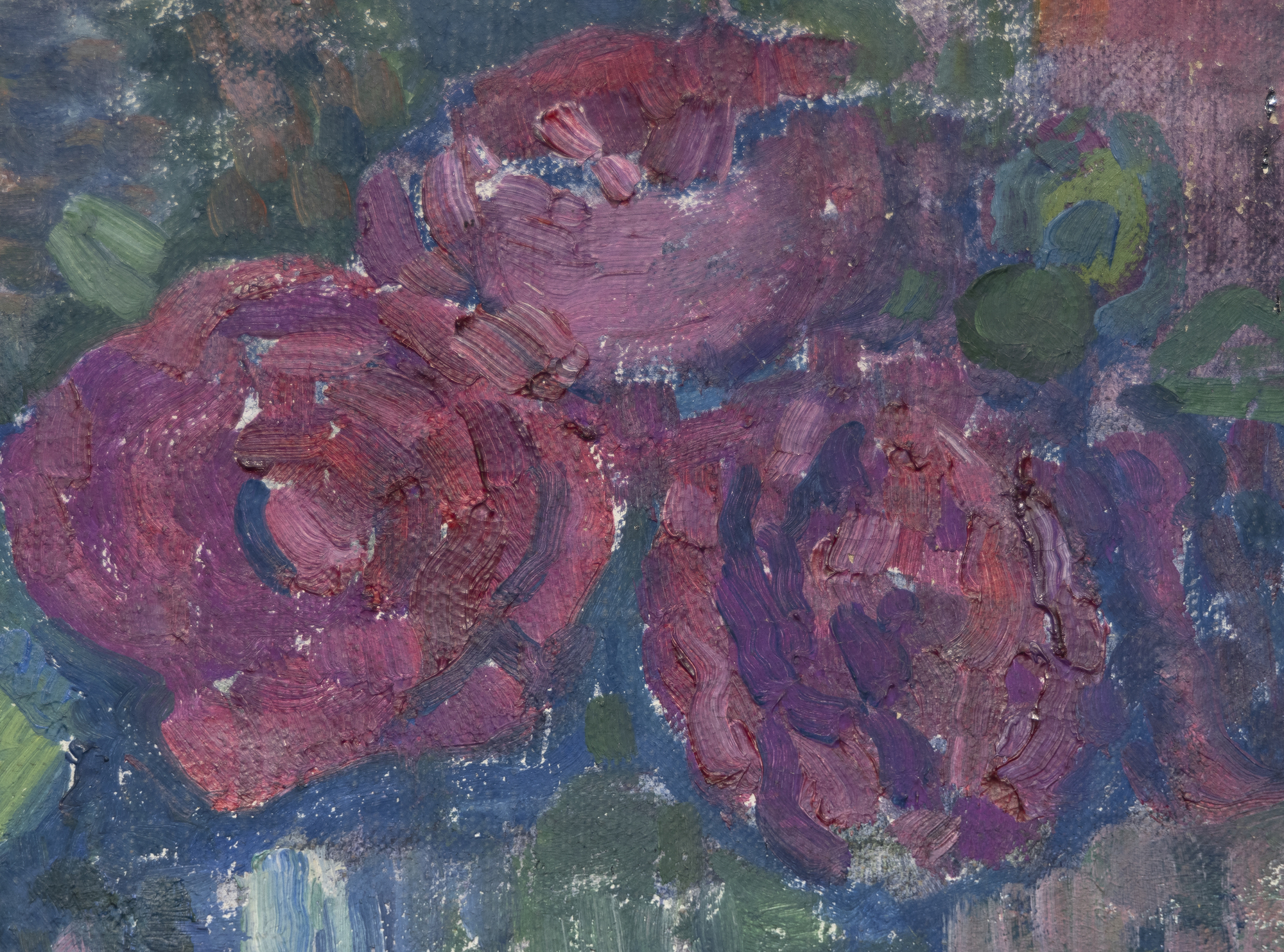THÉO VAN RYSSELBERGHE (1862-1926)










Provenance
Élisabeth Van Rysselberghe, ParisBy descent through the Guicheteau family
Me Briest, Paris, sale June 17, 1985 no. 113A
Lombrail Auction House, Champin & Gauthier, Enghien-les-Bains, sale November 24, 1985 no. 30
Private Collection, New York
Literature
Feltkamp, R., Théo Van Rysselberghe, Catalogue Raisonné, Brussels, 2003, no. 1913-023, illustrated p. 178 and 406History
An undisputed master of the booming Belgian Neo-Impressionist movement from 1887 onward, Théo van Rysselberghe painted this portrait of his wife, Maria (née Monnom) during the first decade of the twentieth century. He had pressed onward from the influence of Whistler’s Tonalism, Impressionism, and the Pointillism of Seurat to perfect a highly refined understanding of color, its harmonic resonances, and a meticulous rendering of formal elements. An exemplary draftsman, optical impressions based on color interactions remained a principal concern for Van Rysselberghe. Here, short strokes of color replaced the small dots of a Pointillist, and the color scheme is not the homogenized, harmonious one for which the artist has a well-deserved reputation. Rather, this portrait advances color theory in an entirely different manner. Its visual interest rests with the dynamic contrasts of his wife’s silvered coiffure, her platinum-hued dress, and the stark-white fireplace mantle — all staged within the optical vibrancy of the surround dominated by complementary reds and greens. It is a visually stimulating demonstration by a painter who understood the dynamic impact of this unusual color scheme and who arranged the sitter with a strong accent on a diagonal and executed the formula with the craft and agility of a painter in full control of his painterly assets.
MARKET INSIGHTS
- Three of Van Rysselberghe’s top ten sales at auction occurred in the last three years.
- Half of his top ten sales at auction occurred in the last six years.
- Nine of his top 20 sales at auction are portraits.
Top Results at Auction
Comparable Paintings Sold at Auction
- This portrait would bring a significantly higher amount if put to auction in 2023.
- A highly desirable portrait, extensively documented and exhibited.
- Comparable quality to our portraits.
Paintings in Museum Collections
Image Gallery
Authentication
Feltkamp, R., Théo Van Rysselberghe, Catalogue Raisonné, Brussels, 2003, no. 1913-023, illustrated p. 178 and 406
View Catalogue Raisonné
Inquire
You May Also Like










































